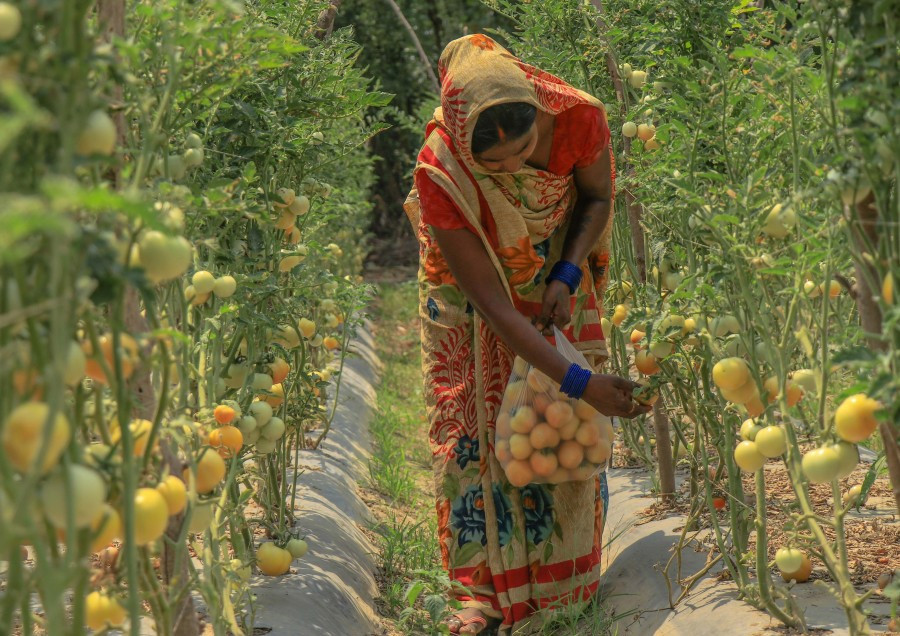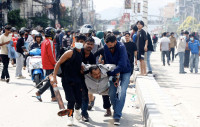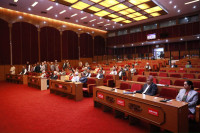Columns
Promoting gender-responsive trade
Gender-inclusive trade can have a multiplier effect on women, their families and also the GDP of a nation.
Sagar Jung Karki
Women have long been facing barriers in various avenues of the economy, including trade. Even though gender equality (goal 5) and reducing inequalities (Goal 10) are some of the major sustainable development goals (SDGs) envisioned by the United Nations to be achieved by 2030, the journey to them is still a long way off. The economic burden of the Covid-19 pandemic has disproportionately affected women in Nepal, and the most affected sectors have been ones with a higher share of female workers, including health, hospitality, agriculture and small and medium enterprises (SMEs).
In Nepal, SMEs contribute 82 percent of the export earnings; however, only about 13 percent of women entrepreneurs fully or partially own these SMEs. According to The International Trade Centre's (ITC) Covid-19 Business Impact Survey, 64 percent of women-led enterprises reported being strongly impacted, compared to 52 percent of men-led firms. Women represent 51.04 percent of the total population, but there is no alternative to promoting a gender-inclusive trade policy when it comes to meeting the needs of women exporters, producers and entrepreneurs. Therefore, several necessary steps should be taken to address the gender imbalance in trade.
Leveraging technology
The Covid-19 pandemic has acted as a catalyst for all small businesses to digitalise and utilise the power of technology in promoting trade. Women entrepreneurs can benefit greatly from digitalisation by accessing new markets and opportunities, thereby reducing the cost of participating in trade. Technology can be of great help in bridging the gap between men and women entrepreneurs. Thus, considering their disproportional impact during the pandemic, women business owners must be given capacity-building training on using export and other trade tools. Nepal, a least developed country (LDC), faces a wider digital divide than other nations. And this calls for an expansion of internet and digital services targeted to women-led businesses.
Inter-governmental organisations such as ITC have launched the SheTrades programme that aims to bridge the gap between women in trade by addressing the barriers. The government, non-governmental organisations (NGOs), civil society organisations (CSOs) and relevant stakeholders need to inform and involve women entrepreneurs in these programmes. Similarly, promoting exports of services such as ITC and professional services is a must for landlocked countries like Nepal. And women can play a vital role in this avenue as more and more women are studying IT and entering the booming industry.
Decentralised approach
Nepal should take a decentralised approach to promote and implement effective gender-inclusive trade. Federalism has opened a plethora of avenues for promoting internal as well as international trade. For instance, provinces bordering India, like the Madhesh province, can encourage women to export their products directly to neighbouring markets in India, which would significantly decrease transport costs and subsequently increase income for the women. In a federal structure, municipalities, wards, and provincial governments can initiate trade promotion programmes focusing on female businesses.
Policy reforms and effective implementation
At the international level, Nepal is a signee of the Buenos Aires Declaration of the World Trade Organization (WTO) that has acknowledged the need for gender-responsive policies on trade and development. Using gender-disaggregated data with an intersectional approach, Nepalese policymakers can identify barriers and instigate policy interventions by reducing tariffs or addressing non-tariff measures for women-led businesses. A World Bank study found that the removal of import tariffs for women could mean an increase in 2.5 percent of their income when compared with men. However, a more strenuous task is the implementation of these policies, which can be enhanced by informing the women and organisations affected by the new policy and tracking the progress of policy implementation. Think tanks, NGOs, and CSOs should gather necessary data as well as inform and engage the government in the implementation of these women-friendly trade policies. The role of think tanks, in particular, is more crucial as they can mediate between intergovernmental agencies, women entrepreneurs, policymakers and the public.
Way forward
Gender-inclusive trade can have a multiplier effect not only on women but their families and also the GDP of a nation. Nepal can learn from countries such as Canada, Iceland, and Sweden, which have benefited by implementing gender-inclusive trade policies to reduce gender inequality. The World Trade Organization (WTO) is campaigning to make trade more gender inclusive, with initiatives such as the World Trade Congress on Gender, which will take place on 5-7 December 2022, with the theme “Gender Equality for Sustainable Trade and Recovery”. According to WTO, the conference is unique as it is the first to be held on the topic of gender and trade, where researchers will present their papers, experts will discuss their viewpoints and policymakers will be encouraged to make gender-responsive trade policies. These international conclaves can play a positive and crucial role in promoting gender equality in the trade sector.
Economic development cannot be achieved by excluding women. Women traders may be further pushed into a vicious cycle of poverty and inequality following the gradual removal of preferential tariffs on exports that Nepal has benefited from as a least-developed country. Therefore, gender-responsive trade is the way forward for sustainable and favourable trade in Nepal.




 9.12°C Kathmandu
9.12°C Kathmandu















